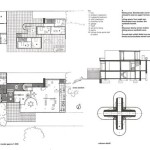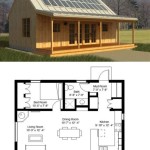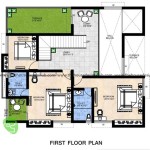Japanese House Floor Plan Architecture: A Journey Through Simplicity, Functionality, and Harmony
Japanese traditional architecture embodies a timeless fusion of simplicity, functionality, and harmony with nature. At the heart of this architectural style lies the Japanese house floor plan, a carefully crafted layout that reflects the intricate relationship between space, light, and the environment. ### Key Characteristics of Japanese House Floor Plan Architecture: 1.Openness and Flexibility:
- Japanese house floor plans prioritize open and flexible layouts, allowing for easy movement and adaptability according to changing needs and lifestyle. - Sliding doors (fusuma) and removable partitions (shoji) create dynamic and flexible spaces, blurring the boundaries between rooms. 2.Light and Nature Integration:
- Japanese architecture emphasizes bringing natural light into the living spaces. - Large windows and sliding doors provide ample daylight and create a sense of connection with the surrounding environment. - Gardens, courtyards, and carefully manicured landscapes are integral parts of the floor plan, extending the living space beyond the walls. 3.Modular and Functional Design:
- Japanese house floor plans consist of modular units called tatami mats. - Tatami mats define room size and layout, providing a standardized and functional grid system. - Built-in furniture and storage solutions maximize space utilization and create a clutter-free environment. 4.Zen-Inspired Minimalism:
- Japanese design embraces Zen principles of simplicity and minimalism. - Clean lines, neutral colors, and uncluttered spaces create a serene and contemplative atmosphere. - Minimalism encourages a focus on essential elements, promoting inner peace and harmony. 5.Indoor-Outdoor Connection:
- Japanese architecture seeks to dissolve the boundaries between indoor and outdoor spaces. - Verandas (engawa) and porches (genkan) act as transitional zones, connecting the interior with nature. - Gardens and courtyards are integral elements of the floor plan, visible from various rooms, fostering a connection with the natural world. ### Benefits of Japanese House Floor Plan Architecture: - Promotes harmony and balance between living spaces and nature. - Encourages flexibility and adaptability to changing needs and lifestyles. - Optimizes space utilization through modular design and built-in storage. - Fosters a sense of tranquility and inner peace through minimalist design. - Creates a seamless flow between indoor and outdoor environments. ### Conclusion: Japanese house floor plan architecture stands as a testament to the harmonious coexistence of functionality, simplicity, and connection with nature. Its enduring principles continue to inspire modern architecture worldwide, offering a blueprint for creating living spaces that promote well-being, mindfulness, and a deep appreciation for the natural world.
Traditional Japanese Home Floor Plan Cool House Plans Ideas Des Architecture Style

Oh House By Takeru Shoji Architects Japan Design Layout Plans Japanese

House In Akashi Has Courtyards For Growing Fruit And Drying Laundry Modern Floor Plans Japanese

The Ant House Double Structure Pleasure Japanese Architecture

Traditional Japanese House Floor Plan Google Search Plans

Traditional Japanese House Style

Japanese House For The Suburbs Traditional Style
What Do The Blueprints Of A 1 Floor Traditional Japanese House Look Like Quora

House With A Margin Yawa Design Lab Archdaily

Gallery Of Machiya In Kawagoe House K S Architects 23 Japanese Floor Plans Design








